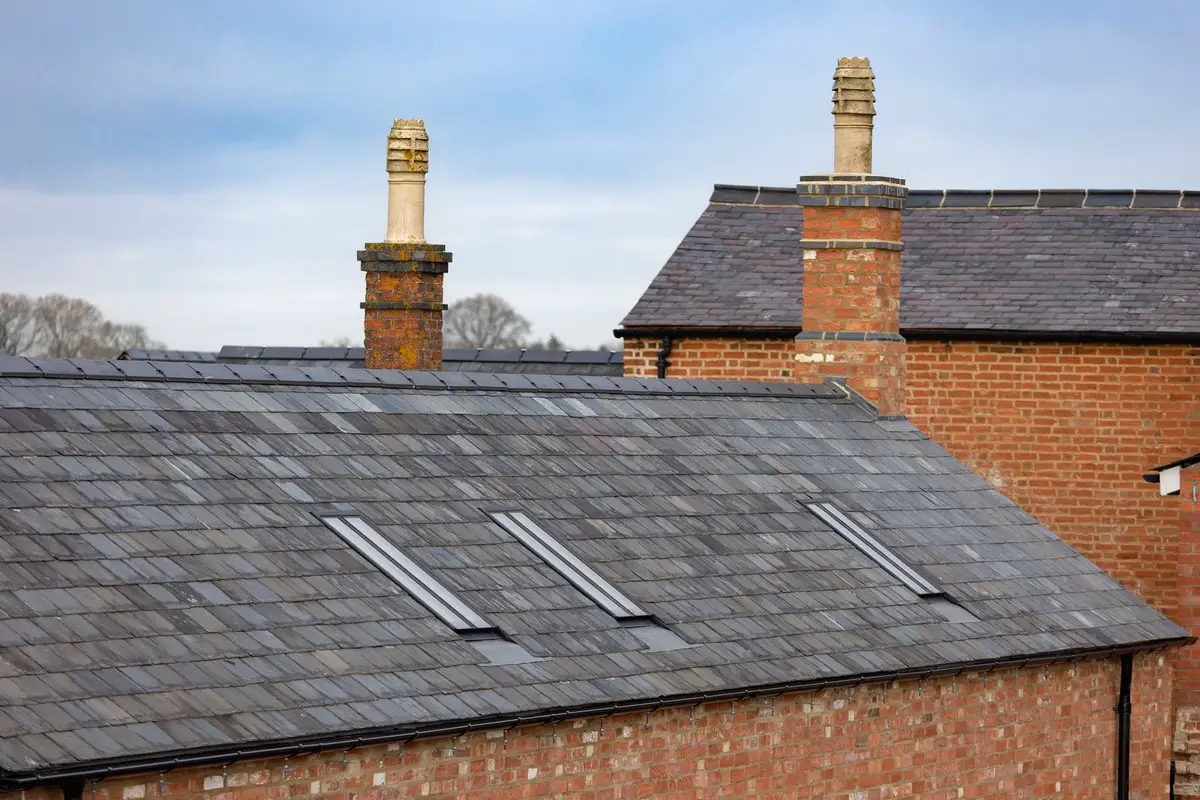Conservation rooflights and glazing bars explained, Roofing window advice, Building glazing specification
Conservation Rooflights and Glazing Bars Explained
3 July 2024
Paul Trace from Stella Rooflight takes explains what constitutes a genuine glazing bar on a conservation rooflight
Conservation rooflight glazing bars are an essential part of any conservation rooflight. These bars help to create the distinct and traditional look of the rooflight while also providing structural support to the glazing.
What are conservation rooflight glazing bars?
Conservation rooflight glazing bars are the metal frames that hold the individual panes of glass in a conservation rooflight. These bars are designed to be slim and unobtrusive, providing maximum daylight while maintaining the traditional look of the rooflight. They are typically made of a durable material such as steel and can be painted (along with the rest of the frame) to match the colour of the roof.
Why are conservation rooflight glazing bars important?
Conservation rooflight glazing bars are an important part of the rooflight’s design. They not only provide structural support to the glazing but also contribute to the overall aesthetic of the rooflight. The slim profile of the bars allows for maximum daylight to enter the room while maintaining a traditional appearance. This is particularly important for buildings in conservation areas, where maintaining the historical integrity of the building is crucial.
Indeed, a Conservation Officer may make it a requirement of your planning consent that genuine conservation rooflight glazing bars are included in your rooflight design. This may be to exactly replicate any replacement windows or to remain in-keeping with the aesthetics of the surrounding area.
Features of conservation rooflight glazing bars
There are several features to consider when choosing conservation rooflight glazing bars:
Material: The bars can be made of aluminium or steel. Aluminium bars are lightweight and corrosion-resistant, while steel bars are strong and durable.
Finish: The bars can be finished in a range of colours to match the roof or surrounding architecture. They should have the same protective paint or powder coating as the rest of the frame to protect against the elements.
Profile: The profile of the bars can be slim or more substantial, depending on the desired aesthetic and structural requirements. Again, it is likely that a Conservation Officer will insist on slim, subtle glazing bars, which better match the Victorian original design. It will also allow more daylight into room, which is the primary function of the rooflight.
Glazing: The bars can be designed to hold single, double or even triple glazing, depending on the insulation requirements of the building.
Important consideration for conservation rooflight glazing bars
If you require glazing bars for your conservation rooflight then it is extremely important to understand that not all products are the same. Some companies use stuck on plastic glazing bars, which may look authentic, yet can cause problems. As previously mentioned, glazing bars should form part of the frame itself and provide additional strength and durability. Stuck on glazing bars can also suffer from maintenance problems as debris often gets stuck in and around this area.
Furthermore, it is not recommended that tapes or glues are used on high performance self-clean glazing units as it will damage the glass. Rooflight glazing bars should provide a slim profile (no more than 40mm wide internally) and provide both strength and an original appearance that stuck on plastic bars simply cannot.
Conclusion
Conservation rooflight glazing bars are an essential part of any conservation rooflight. They provide structural support to the glazing while maintaining the traditional look of the rooflight. When choosing conservation rooflight glazing bars, it is important to consider the material, finish, profile, and glazing requirements. By carefully selecting the right glazing bars, you can create a rooflight that not only looks great but also provides all the benefits of natural daylight.
For more information download ‘The Ultimate Guide to Conservation Rooflights’ – an independent guide to everything you need to know about specifying conservation rooflights – available exclusively on the Stella Rooflight website.
To find out more about Stella conservation rooflights visit: https://stellarooflight.co.uk/conservation-rooflights/
About Stella Rooflight
Stella Rooflight is a bespoke manufacture of high quality stainless steel rooflights. From design and production through to customer service, Stella has a single vision of doing things better than the industry standard.
Stella produces exceptional rooflights that combine a flush fitting profile, while utilising the very best of materials, and has become the first choice for discerning clients looking to bring natural daylight into their living spaces through premium quality rooflights.
01794 745445
Comments on this guide to Conservation Rooflights and Glazing Bars Explained article are welcome.
Skylights + Roofing
Roof Skylights
Promote Better Living by Installing Skylight
Rooflights effect on lighting and energy costs
Thermal Performance of Rooflights
Roofing Replacement Posts
What You Need to Know About Replacing Your Roof

First Time Replacing Your Roof
Building Articles
Residential Architecture
Comments / photos for the Conservation Rooflights and Glazing Bars Explained page welcome








